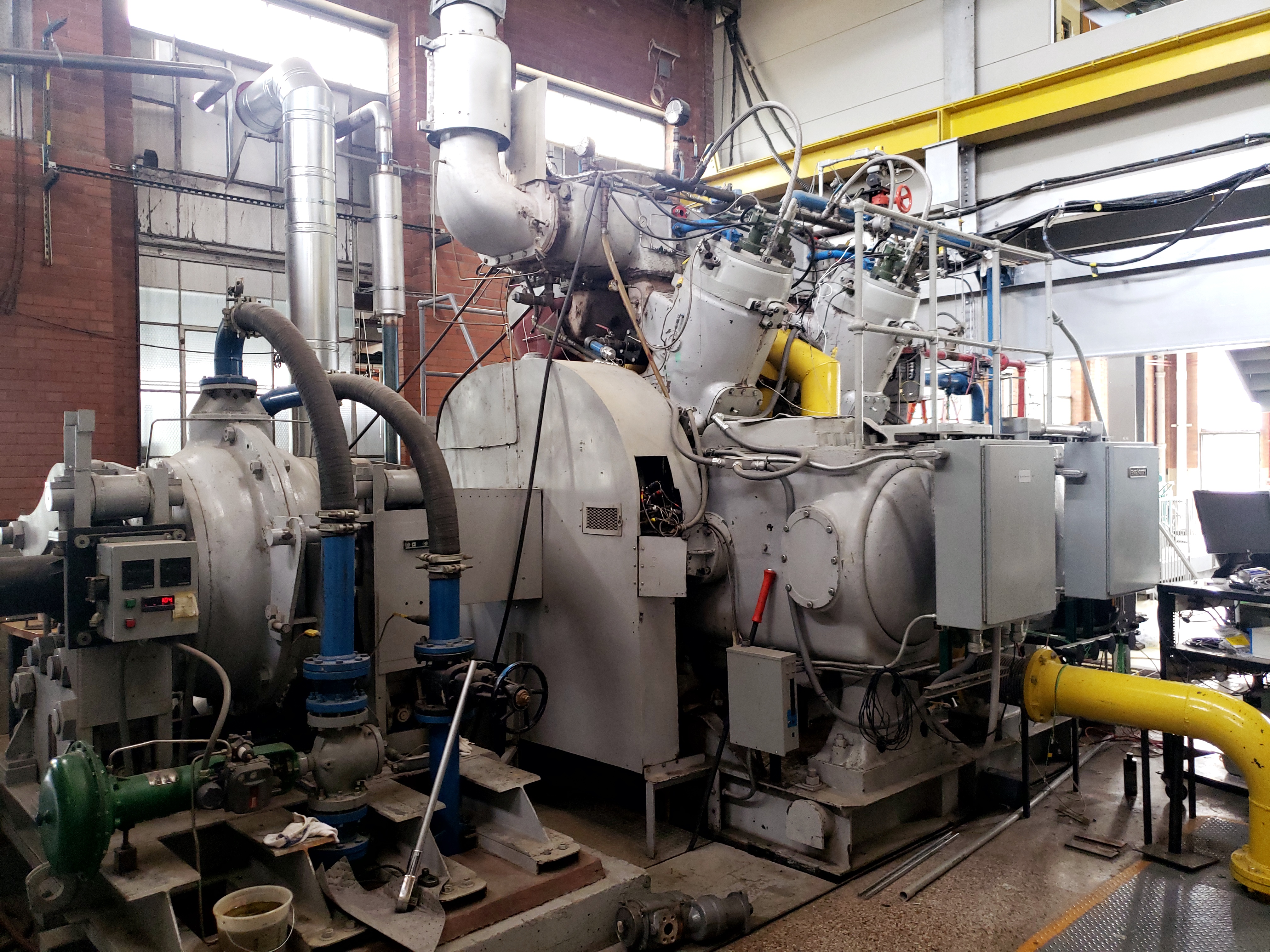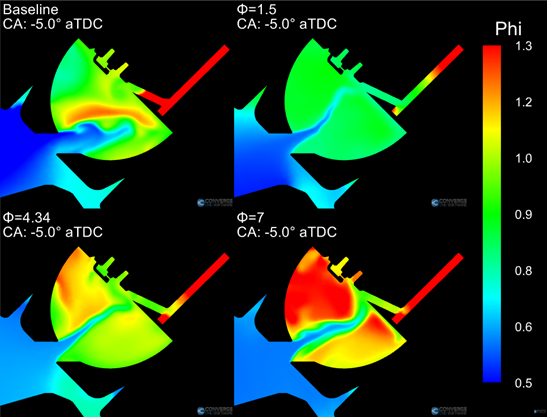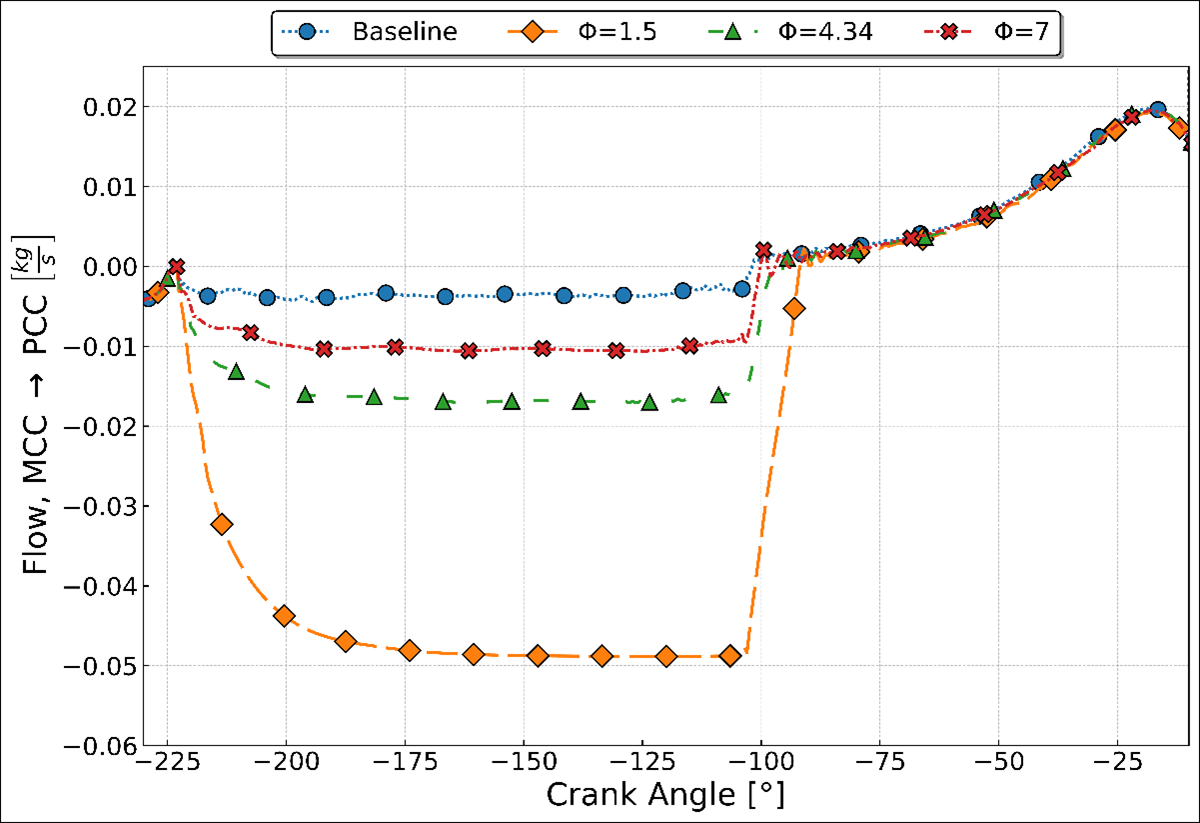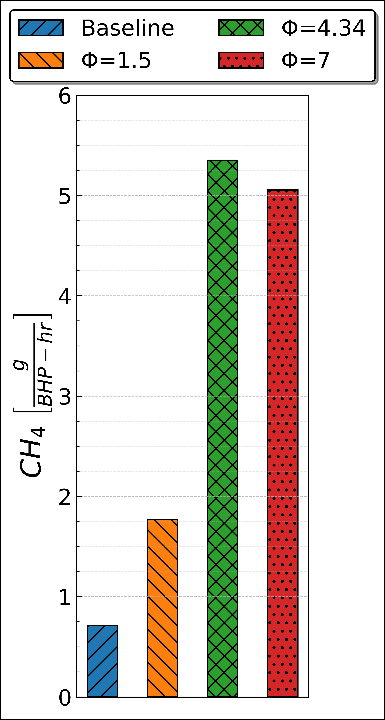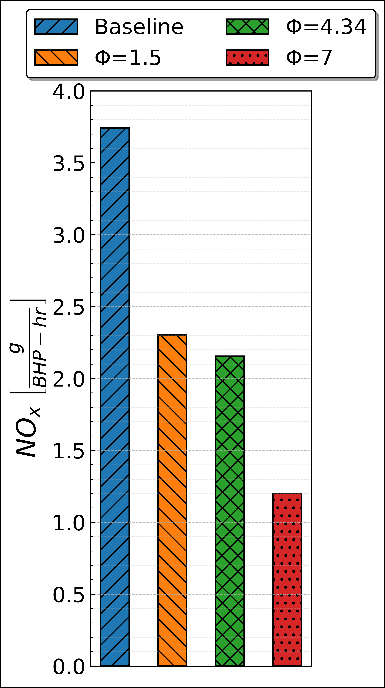Premixed Air/Fuel in the PCC
CFD plus engine investigation of injecting a premixed air/fuel charge into an active pre‑combustion chamber on a large‑bore NG 2‑stroke engine. What improves, what regresses, and why. Experimental campaign is ongoing, this page only reports CFD process and results.
Project quick facts
Engine platform
Cooper‑Bessemer GMV‑4TF • 2‑stroke LB NG • Active PCC
Methods
CFD and lab validation
Blend range
Ø=[1.5, 4, 7]
Outcome
Under tested setups, premixed PCC was not a viable retrofit
Overview
Problem
Lean‑burn LB NG engines target lower NOx via active PCC, but stratified PCC mixtures can hurt stability and methane emissions. Can premixing inside the PCC help?
Objective
Evaluate premixed air/fuel injection strategies into the PCC for homogeneity, ignition stability, emissions, and impact on MCC combustion.
Approach
CFD setup
- Single‑cylinder GMV geometry; intake/exhaust modeled
- RANS k‑ε; SAGE combustion with detailed NOx
- Baseline calibrated to experimental trends
- Uniform “ideal premix” seeded at −6° aTDC for comparison
Premix strategies
- Low‑pressure premix: PCC mass‑flow boundary; φ ≈ 1.5–7
- High‑pressure premix: pressure boundary ~150 psi; late SOI
- Tracked PCC/MCC φ, stratification (σ), TKE, MFB10/50/90, p‑θ, AHRR
Results & highlights
Ideal premix (uniform PCC)
- Lower ignition delay (faster kernel growth)
- Lower CH₄ & NOx residuals vs. baseline
- Slight power drop (peak pressure ↓ ~1.3%)
- Lean mixes need high mass flow → fuel pushed into MCC
- PCC homogeneity improves only for very lean injections
- Combustion weakens; power ↓; CH₄ ↑ markedly
- Later SOI reduces stratification but adds excessive turbulence
- Kernel cannot develop → misfires/very poor cycles
- Low‑pressure cases: CH₄ ↑ substantially; NOx ↓ from cooler cycles
- Overall power ↓ across premix cases
- Conclusion: premixed PCC not recommended as a retrofit
